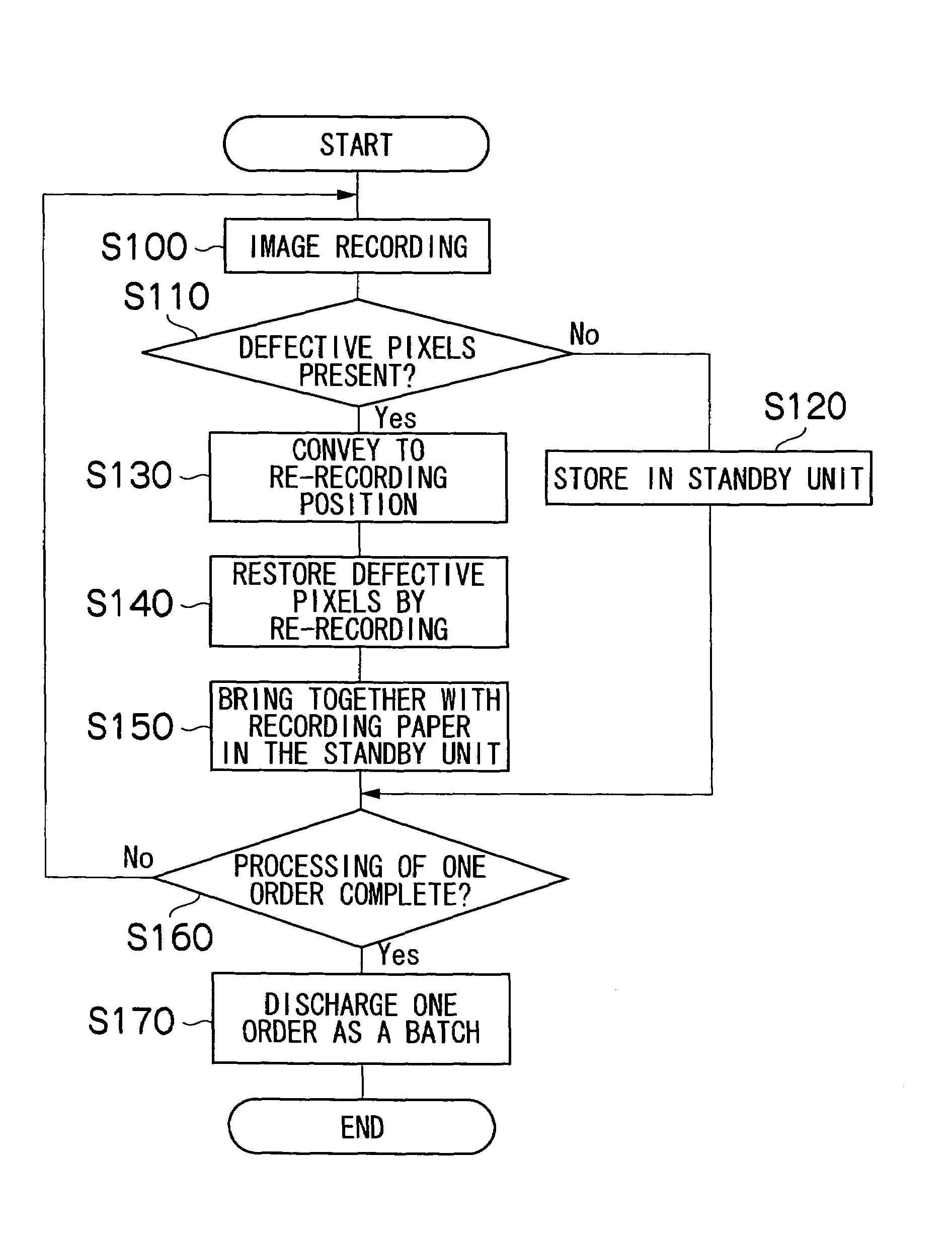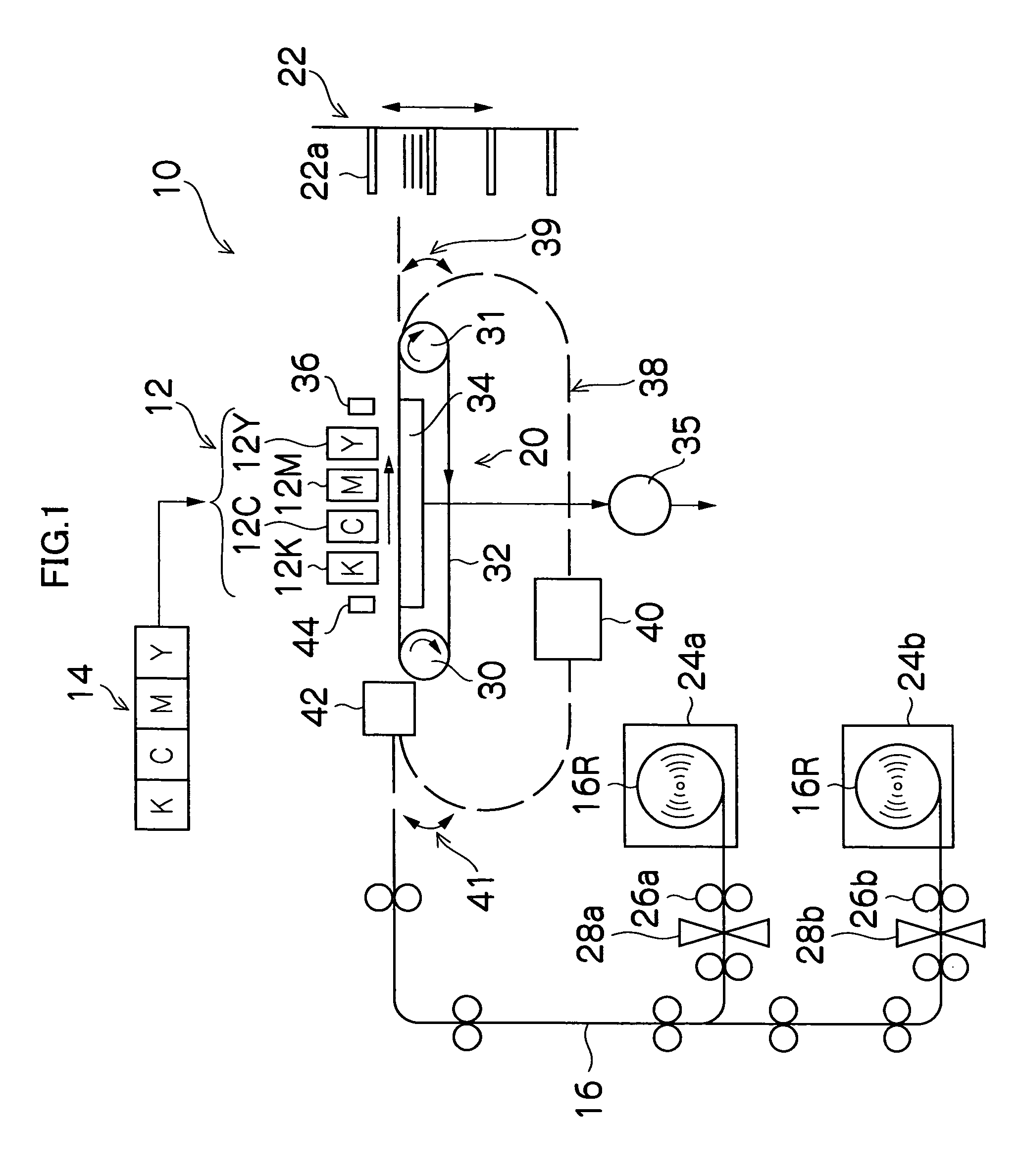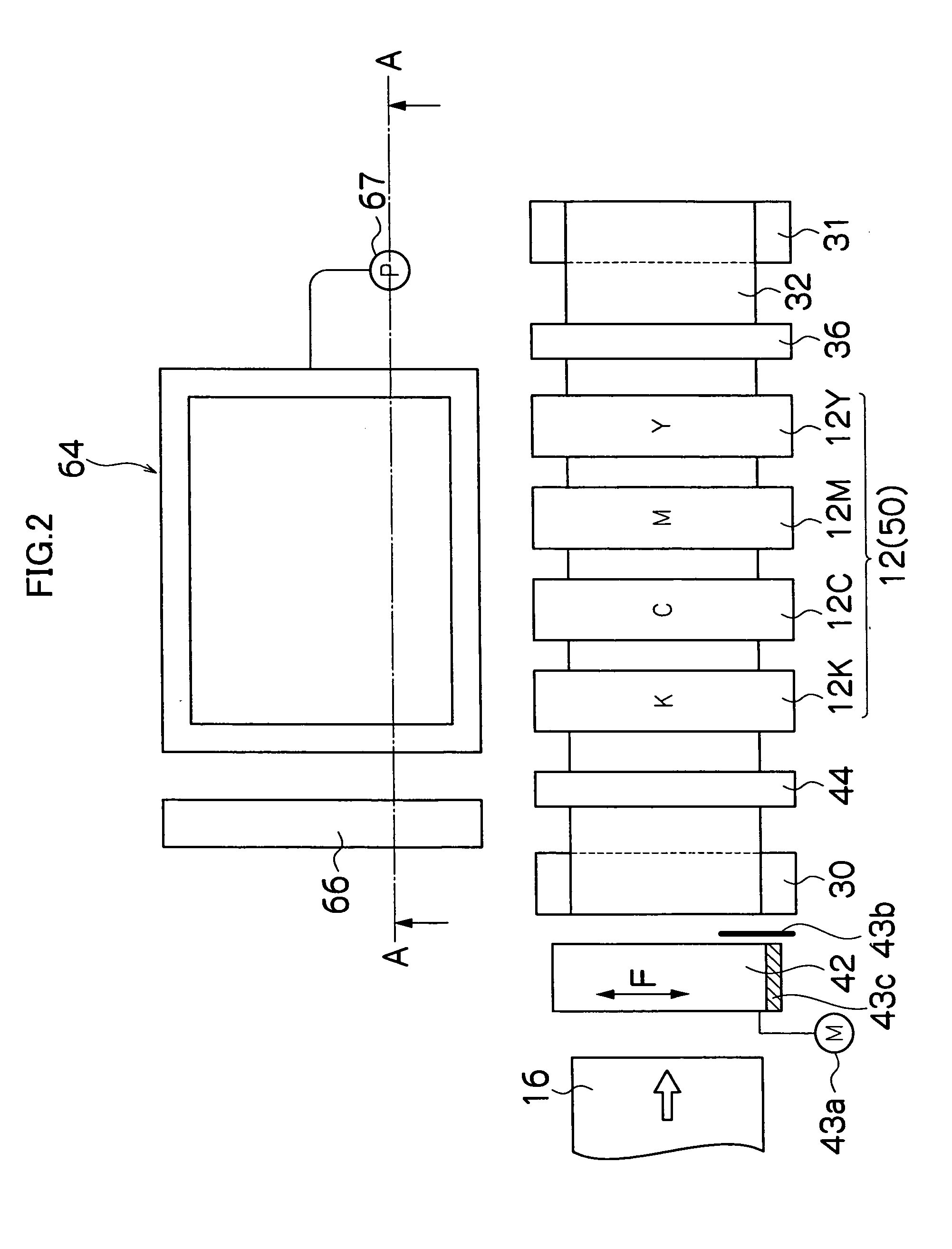Image recording apparatus
a recording apparatus and image technology, applied in the direction of printing, other printing apparatus, etc., can solve the problems of inconspicuous missing print, inconvenient recording of missing prints, and inability to discharge or discharge the ink, so as to achieve the effect of reliably restoring the recording of defects
- Summary
- Abstract
- Description
- Claims
- Application Information
AI Technical Summary
Benefits of technology
Problems solved by technology
Method used
Image
Examples
first embodiment
[0069]The effect of the first embodiment is described below in accordance with the steps shown in the flowchart FIG. 4.
[0070]FIG. 4 is a flowchart showing the processing flow for restoring defective pixels as an effect of the image recording apparatus 10 of the present embodiment. The flowchart in FIG. 4 shows the processing of a single order, and in the actual work process it is commonplace to process a plurality of orders, so even if processing for a single order is completed, overall processing may not be complete and the processing shown the FIG. 2 may be repeatedly executed.
[0071]The first embodiment is one in which the first recording cycle is conducted on cut paper (sheets), and defective pixels are detected each time an image (frame) is recorded in the order. When there are no defects, the recorded paper is stored in the standby unit, and when defects have been detected, the recorded paper is returned to the recording unit 12, defective pixels are restored by recording the d...
second embodiment
[0094]Next, the present invention is described.
[0095]FIG. 6 is a schematic block diagram showing a second embodiment of the image recording apparatus of the present invention. The image recording apparatus of the second embodiment shown in FIG. 6 performs the first image recording directly to the roll paper (continuous paper), detects defective pixels for each image frame after the images have been recorded, forms a loop portion of uncut paper in standby until the processing of a single order is completed, returns the recording paper of a single order before the next order is processed when defective pixels have been detected, forms a loop portion in front of the recording unit, records solely the images with defective pixels, and cuts the paper with the images (frames) of a single order as a batch.
[0096]In other words, as shown in FIG. 6, the image-recording apparatus 100 has a printing unit 112 with a plurality of print heads 112K, 112C, 112M, and 112Y provided for each ink color;...
PUM
 Login to View More
Login to View More Abstract
Description
Claims
Application Information
 Login to View More
Login to View More - R&D
- Intellectual Property
- Life Sciences
- Materials
- Tech Scout
- Unparalleled Data Quality
- Higher Quality Content
- 60% Fewer Hallucinations
Browse by: Latest US Patents, China's latest patents, Technical Efficacy Thesaurus, Application Domain, Technology Topic, Popular Technical Reports.
© 2025 PatSnap. All rights reserved.Legal|Privacy policy|Modern Slavery Act Transparency Statement|Sitemap|About US| Contact US: help@patsnap.com



